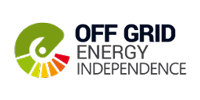
Virginia’s clean energy policies introduced during 2020 included the US’ biggest state-level target for deployment of energy storage – and the state’s regulator has now introduced the rules intended to enable achievement of that target.
The Virginia Clean Economy Act (VCEA) passed with the approval of both sides of the state’s political divide in April last year, albeit after lengthy debate and pushback from utilities. The act puts the state on the path to 100% renewable and clean energy by 2050, brought Virginia into the New England and Mid-Atlantic US Regional Greenhouse Gas Initiative (RGGI) alongside 11 other states and introduced a 3.1GW target for energy storage deployment by 2035.
With Virginia now one of seven US states with a form of energy storage target in place, Virginia’s goal slightly outdoes the next largest, New York’s, which was set at 3GW by 2040. With that in mind, the Virginia State Corporation Commission – which has the authority to regulate numerous sectors including everything from utilities to insurance – issued its framework for the state’s two main utilities to adopt in pursuing that goal.
The regulations issued on 18 December 2020 went into force on the first day of this year. They concern the ways in which utilities Appalachian Power Company (APCo) and Dominion should petition the Corporation Commission for approval to “construct or acquire 400MW and 2,700MW, respectively of new utility-owned energy storage resources by 2035”.
The SCC received commentary and input from industry and non-industry stakeholders including the two utilities and groups as it formulated the regulations including the US national Energy Storage Association (ESA) and Solar Energy Industries Association (SEIA), developer GlidePath, Mitsubishi Power Americas and the Virginia Department of Mines, Minerals and Energy as well as environmental groups and others.
read more












